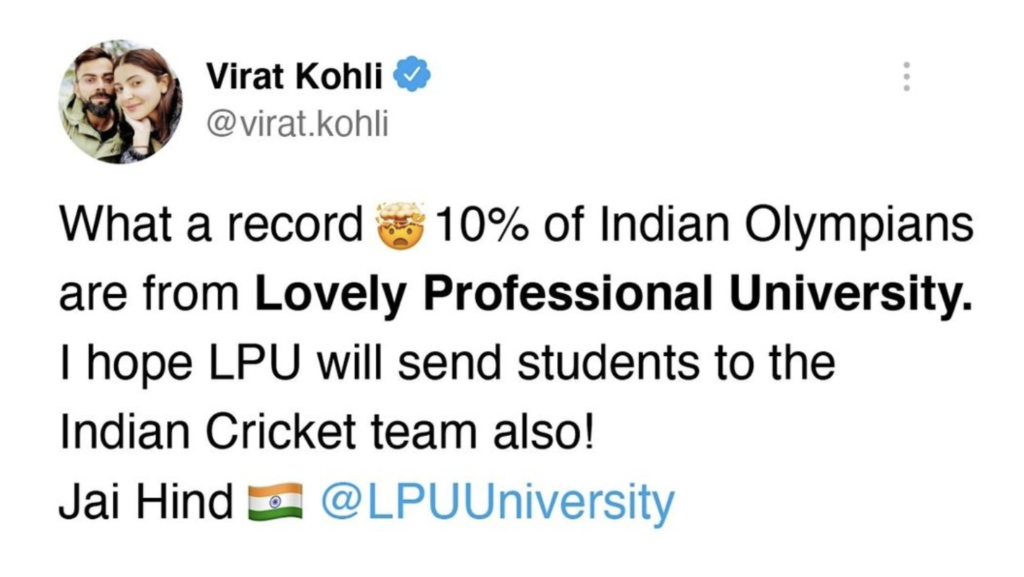Written By Tanya Batra
Introduction
The ‘Guidelines For Influencer Advertising in Digital Media’ (“Guidelines”) were released by the Advertising Standards Council of India (“ASCI”) on May 27th 2021, requiring Indian social media influencers to comply with it for all posts published by them starting from June 14th 2021. The object of the Guidelines is to allow consumers to determine and differentiate content that is paid and promoted as opposed to other content that influencers post. This is to prevent advertisers and manufacturers from misleading consumers and abusing the trust placed by them, by way of using influencers for posts that are promotional in nature.
Impact of Social Media
The impact of social media influencers is massive today. While they shape and mould the trends, they also have a significant role to play in the lives of the immensely large fan club. While there are various different kinds and types of social media influencers today in the Indian Landscape, what remains to be a common thread between them is the fact that they are increasingly replacing the traditional modes of advertisement. What gets the ball rolling in favour of many upcoming and even established businesses is their brand worthiness qua their affiliations with popular content creators and social media influencers. The impact of Social Media Influencers is thus colossal in the Advertising business today.
Overview of the Guidelines
Certain obligations have been placed on advertisers as well as influencers as per the Guidelines, as stated below.
- Material Connection: Any incentive or benefit provided to the influencer by the advertiser could amount to a ‘material connection’ and need not be limited to monetary compensation. The term has been defined under the said Guidelines under ‘Definitions’. Other forms of incentives include discounts, free products, gifts, hotel trips, employment offer or media coverage. Regardless of whether an influencer was approached to review a product, if there exists a ‘material connection’, the post will necessarily have to be disclosed as an advertisement by the influencer, such that it is in compliance with the Guidelines as well as with ASCI’s Code for Self-Regulation of Advertisement Content in India (“Code”).
- Virtual Influencer: In the case of virtual influencers, it must be disclosed to consumers that they are interacting with computer generated people or avatars that are fictional and not real humans.
- Manner of Disclosure: A mere disclosure tool provided by social media intermediaries is not sufficient to fulfil the requirements as per the Guidelines, and a simple ‘sponsored’ tag on posts is not enough to satisfy the Guidelines and the obligations therein. Promotional posts must necessarily carry a label disclosing it as an advertisement, in the presence of a ‘material connection’. This is done so that the disclosure is hard to miss to an average consumer.
- Disclosure Format: The wide range of formats on social media platforms allow influencers to advertise products or services in more ways than one, such as stories, posts, reels, podcasts, or live stream. Each format requires a particular form of disclosure label as prescribed under the Guidelines. In posts without captions, the disclosure label must be so placed over the picture that an average consumer cannot miss it and clearly see it.
- Videos: In the case of videos, the length of a video can vary, and thus the disclosure label must vary too, increasing with the increasing time period of a video.
- Live-streams: In livestreams, the disclosure label must be stated both at the beginning and at the end, as well as mentioned in the caption if the livestream were to stay up on the profile of the influencer.
- Podcasts: In podcasts, the disclosure label should be stated at the beginning and at the end as well as before and after any break taken in the middle of the podcast. The disclosure should be made in English, or if the advertisement is in a different language, then it should be made in that language. Additionally, the Guidelines provide for acceptable forms of disclosure labels, namely Ad, Advertisement, Collaboration, Sponsored, Employee, Partnership, and Free Gift.
- Due Diligence: Influencers must additionally carry out due diligence of their own whereby they review the claims made by the advertiser in the advertisement promoted by them, such that they are satisfied that the advertiser can substantiate the same. The Consumer Protection Act of 2019 (“CPA”) puts a similar onus on influencers, wherein ‘endorsers’ can be penalised for participating in advertisements that are misleading, unless they can verify that they exercised due diligence regarding the accuracy of the claims of the advertisement. However, influencers are not ASCI members and thus the Guidelines cannot be enforced against them by ASCI. If the advertisement proves to be misleading, the consumer has the right to file a complaint under the CPA against the influencers as ‘endorsers’ for participating in a misleading advertisement. Unless the influencer is able to prove that they exercised due diligence, certain penalties can be imposed upon them by the Central Consumer Protection Authority, or the influencer can even be prohibited from endorsing any other product or service for up to a period of three years[1].
Key Takeaways
While the ASCI Code for Self-Regulation of Advertising Content in India (“ASCI Code”) already lays down regulations governing the ‘celebrity’ advertisements, the Guidelines create requirements and regulations specific to digital media for social media influencers who do not usually fall under the category of ‘celebrity’ under the ASCI Code in light of the high thresholds laid down therein (such as compensation amount received or number of followers). However, under the Guidelines the threshold for influencers is vague and does not set out any definite criteria, therefore celebrities advertising on social media may also fall under the purview of an ‘influencer’ and may be required to follow the Guidelines. It is also important to note that the ASCI is a voluntary governing and self-regulatory body and hence it is not possible to statutorily enforce the Guidelines. However, the ASCI Code has received recognition judicially from Indian Courts (Procter and Gamble Home Products Private Limited vs. Hindustan Unilever Ltd.)[2]every now and then and is generally practiced and followed industry wide.
The increasing reach and popularity of influencers on social media and other digital media made it necessary for the ASCI to come up with the Guidelines, and it is these influencers who are now being welcomed as the latest marketing tool for brands worldwide. These influencers have the ability to influence the behaviour of their consumers with content as short as 30 seconds or even 15 in duration, making it even more important to oversee the manner in which they function and make gains commercially. In Marico Limited v Abhijit Bhansali[3], the Bombay High Court recognized social media influencers as a budding or nascent group of individuals who have obtained a high degree of credibility as well as a substantial following on social media. The High Court’s decision noted the need for imposing responsibility on said influencers in view of the power they hold to influence their audience as well as the trust the public places in them. In light of this, the Guidelines are seen as a shift in the right direction.
Case Study – Virat Kohli’s Instagram Post

On 27th of July 2021, Virat Kohli took to Instagram and posted that many of the athletes representing India at the Tokyo Olympics were students at Lovely Professional University (“LPU”), further adding that he hoped LPU will send students to the Indian Cricket Team as well, before proceeding to tag the University. It was quite evident from the post and tag that the post was a promotional one, however, there was no disclosure label as was required by the ASCI influencer guidelines. As a celebrity and a highly influential personality, it is important he act in accordance with the guidelines
In my opinion, instead of simply tagging the social media handle of the University, Virat Kohli and any other similar celebrities in his position hereon, should add a disclosure label, such as Ad, Advertisement, Partnership, Sponsored, Collaboration, etc., on his post so that his followers are aware that it is a promoted post.
BIBLIOGRAPHY
- https://ascionline.in/images/pdf/guidelines-for-influencer-advertising-in-digital-media-final.pdf
- https://www.ftc.gov/system/files/documents/plain-language/1001a-influencer-guide-508_1.pdf
- https://www.asa.org.uk/static/9cc1fb3f-1288-405d-af3468ff18277299/INFLUENCERGuidanceupdatev6HR.pdf
- https://www.easa-alliance.org/sites/default/files/EASA%20BEST%20PRACTICE%20RECOMMENDATION%20ON%20INFLUENCER%20MARKETING_2020_0.pdf
[1]Section 21(2), Section 21 (3), CPA
[2]238 (2017) DLT 585
[3](2020(81) PTC 244(Bom)





